How to Choose a Yoga Teacher Training Program: What to Consider
Thinking about enrolling in a RYT 200 or RYT 500 program? Read this first!
After four long, incredible, exhausting, challenging and wonderful weeks, I graduated from a RYT 200 program. A few weeks ago, I shared some thoughts on the experience midway into the course, and wanted to share some factors I considered and pondered over when I was trying to choose the right YTT program for me. There is no shortage of yoga schools that offer a multitude of different programs, so there are a number of things to think about before you shell out thousands of dollars.

Before I go into the various points, I thought it might be helpful to give some context for how and why I decided to enroll in a YTT program. In June, I moved to San Francisco for a new role at an amazing PR agency; this was the first time I had made the leap and relocated abroad. Sure, I went to university in Australia, but that doesn’t really count because I was home almost every single school holiday.
A few months into living in a new city, it dawned on me that maybe San Francisco wasn’t right for me, right now: I was nearly 7000 miles away from my friends and family and having a really hard time adjusting. Although I felt very settled into the new job and loved my colleagues, I made the difficult decision to make the move back to Hong Kong.
Here’s the catch: I rented an apartment and moved my dogs out here and needed time to sort out the move – at least a month. I had looked into doing a course on a part-time basis in the past, but all the pieces fell into place. The Yoga Garden is an amazing studio in San Francisco that offers immersion, month-long programs, and their admissions and yoga teacher extraordinaire, Cynthia, walked me through the process and offered tons of support. The Yoga Garden is a registered yoga school with the Yoga Alliance, and as a serious wanderluster, I wanted to be able to travel and hold an internationally-recognized teaching accreditation.
Wondering how to choose a yoga teacher training? Read on for some of my top tips for yoga teacher training selection.
1. Is the yoga studio a registered Yoga Alliance School?
This is by no means the most important factor, and you don’t have to be Yoga Alliance-certified, but it is the primary international association and many studios will follow this program. That being said, there are other Yoga associations and boards in different parts of the world so if you’re looking into teaching yoga at a studio, ask around and find out what the industry standards are where you live or want to work.
2. What is the yoga school’s reputation and what is their teaching philosophy?
What is their experience in offering teacher trainings? Did you know that you can actually look up schools on the Yoga Alliance website and see what previous students have to say about the course, what their teaching philosophy is, what styles of yoga they teach and when the school was accredited?
Another factor you may want to consider is class size: some schools, unfortunately, are “yoga teacher factories” and will take in anyone who is willing to pay the course fee. Check out the school’s intake procedure and standards in advance, and find out how many people will be in your class. We had to write a short essay about why we wanted to participate in the course and what yoga means to us: I like to think that this is why we had a great group of people who wanted to be there (under twenty people!), and wanted to learn. Being among like-minded classmates is without a doubt more conducive to your overall experience.
My fellow classmate, Pia, had some great advice to share as well: call and/or visit the yoga school and ideally take some classes to get a feeling of what the atmosphere is like. Also, ask your yoga teachers if they know any of the instructors of the YTT program you have chosen. Leverage your yoga network!
3. Who are the teachers and what is the curriculum like? What is the format?
Find out who your instructors will be, and if you live in the area, check out some of their classes ahead of time. You can find out who the lead instructors and other lecturers are via the school’s profile on the Yoga Alliance website or the school’s standalone website. Find out how long they’ve been teaching, who their teachers were, and if their teaching style resonates with you.
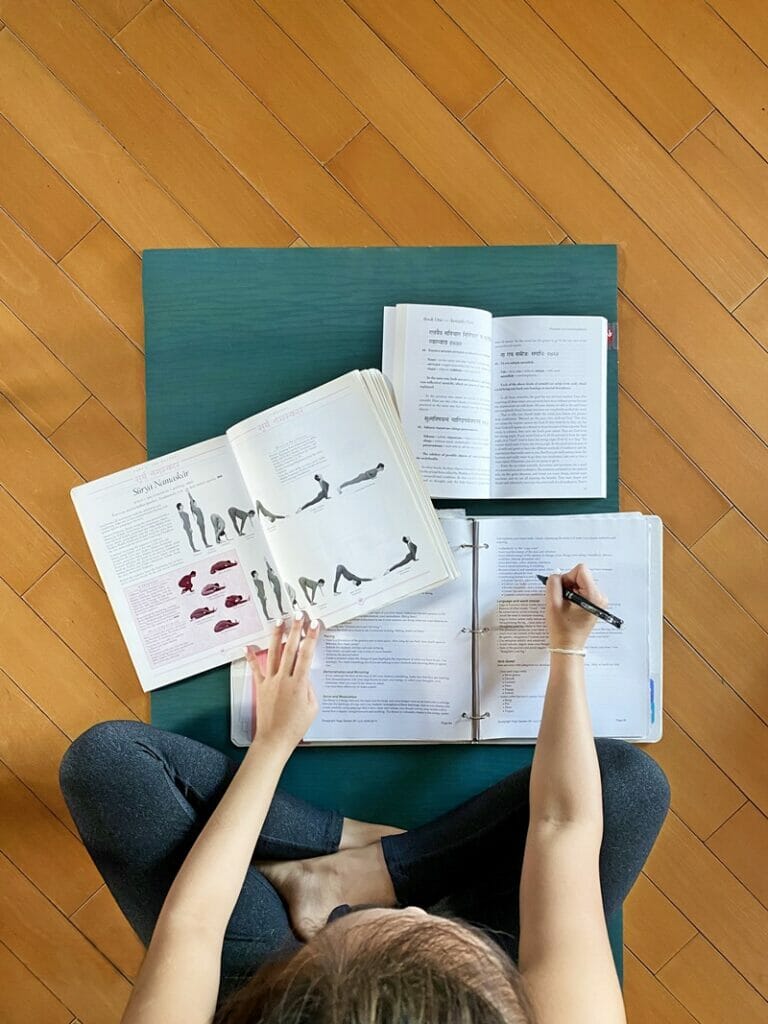
It’s important to get a sense of how the course is structured. Each training is required to dedicate a number of hours to different topics, but each program may have a different area of focus. Some courses might be extremely asana heavy, and others might place a heavier focus on the philosophical aspects of yoga.
In general, the Yoga Alliance requires registered yoga schools to follow a core curriculum consisting of 75 hours of “Techniques, Training, Practice”, 30 hours of “Anatomy & Physiology”, 30 hours of “Yoga Humanities” and 50 hours of “Professional Essentials”. Read more about the RYS 200 core curriculum here.
If you’re not sure, e-mail the course coordinator and ask! Another good question to ask is how much teaching and sequencing will be taught; you want to be able to learn the practical aspects of teaching from the get-go so you feel comfortable with using appropriate language, making hands-on adjustments, offering modifications, handling classroom control and safety, and ensuring proper alignment.
What style of yoga will you be trained in? Iyengar, vinyasa, ashtanga, bikram? Different schools have different strengths: what do you gain, and what do you lose? For example, if you are trained in bikram-style yoga and want to teach only bikram yoga, fantastic. If, however, you are trained in bikram-style yoga and want to offer a diverse range of classes later on, you may feel like you want to take some additional workshops on sequencing, teaching vinyasas and so on.
4. How much does the course cost, what is the format and where is it located?
There are several course designations under the Yoga Alliance system based on the number of training hours. Some schools offer immersion or part-time courses, so take the time to consider what works best for your schedule and learning style.
If you learn best when you have time to digest and process information over time, an immersion program might not be the best option for you. And conversely, if you want to take a deep dive into yoga, have a consistent asana practice and are traveling abroad specifically for YTT then an immersion course may work better: to each their own.
There are hundreds of overseas, retreat-style yoga teacher training programs in exotic destinations and these are very appealing. There are also courses closer to home that might be a little more cost-effective as you’re not paying for air tickets, hotels and so on. Neither option is “better” and there are many paths: I was very fortunate in the sense that I was able to do my course at one of the top schools in San Francisco, but was already in the city so it kind of counts as a destination training!
How much does yoga teacher training cost? Pricing for YTT programs vary and this is one instance of where research is crucial: quality teachers and schools tend to carry a higher price tag, but a pricey course does not guarantee quality of teaching. You’ll also need to take into consideration the cost of yoga teacher training books and materials that are prescribed in the course, though you might be able to pick up second hand yoga textbooks. If the idea of forking over a hefty sum of money in one go is a concern, you can look into schools that offer payment plans to help distribute costs, or schools that have apprentice programs and offer discounted tuition in exchange for supporting lead teachers, keeping track of attendance, and so on.
5. What kind of support and resources does the school offer after you graduate?
Yoga teacher training is great for anyone wanting to deepen their practice and understanding of yoga; you don’t necessarily have to go on to become a full-time yoga teacher. However, it’s important to consider what resources you will have access to post-graduation: the Yoga Garden has an active alumni Facebook group and community, offers master classes to alumni and a mentorship program, and you can register to teach in community classes for teaching practice.
Choosing a yoga teacher training can be overwhelmed, especially with the sheer number and variety of program options presented. I hope this guide helps you to narrow down your options and make the best decision for your personal yoga journey! I would love to hear any other thoughts on different factors to think about when choosing a yoga teacher training program!
You might also find these guides helpful:
- Here are some thoughts I had during my YTT experience
- And if you’re not sure what to expect from a YTT program here’s what you need to know
- As a yoga student you never stop learning. This is why you should attend a yoga conference!
Pin this for later!

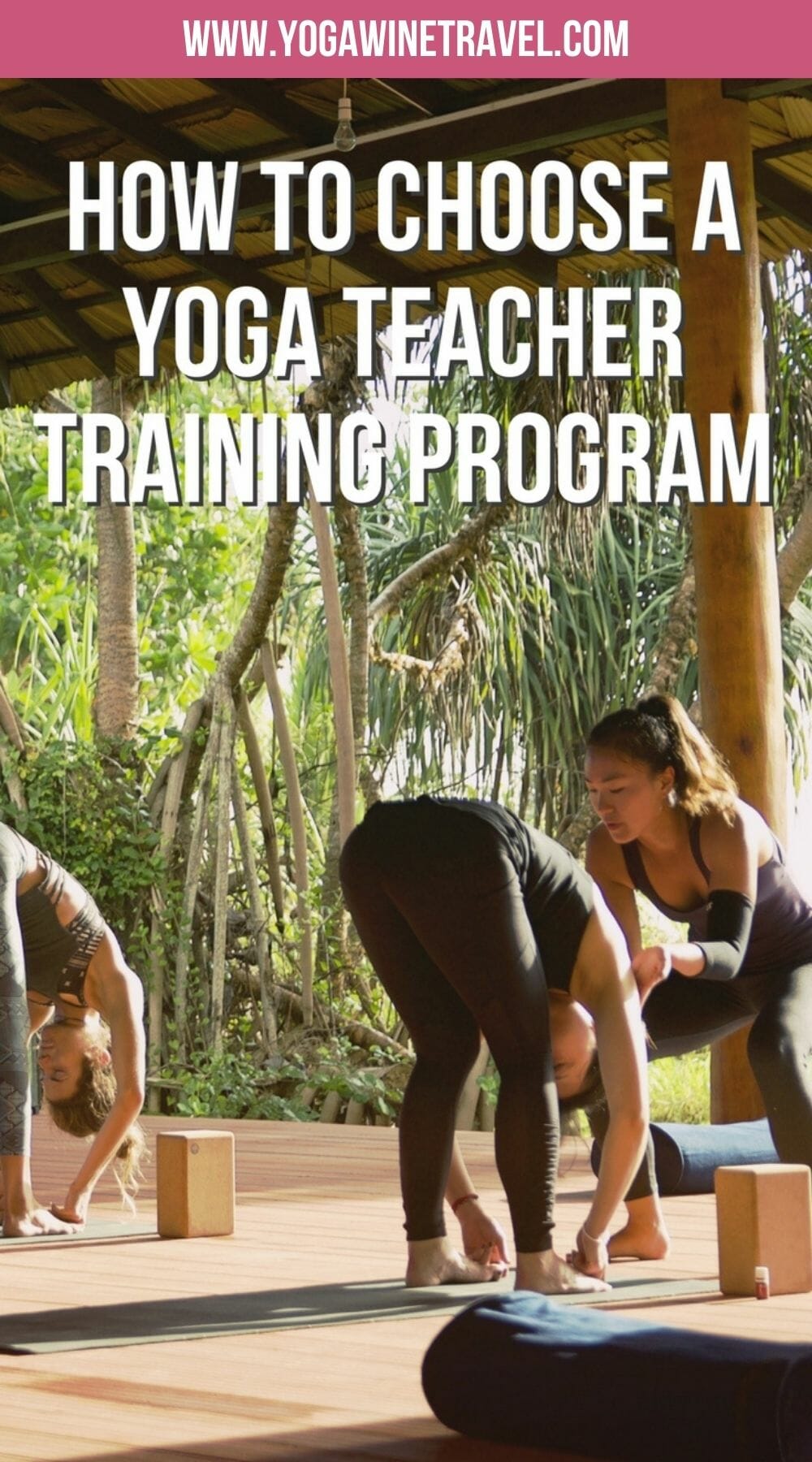
Enjoyed reading this article? Subscribe to the mailing list!
* Unsubscribe at any time. Your e-mail address will only ever be used to send the occasional Yoga, Wine & Travel newsletter.

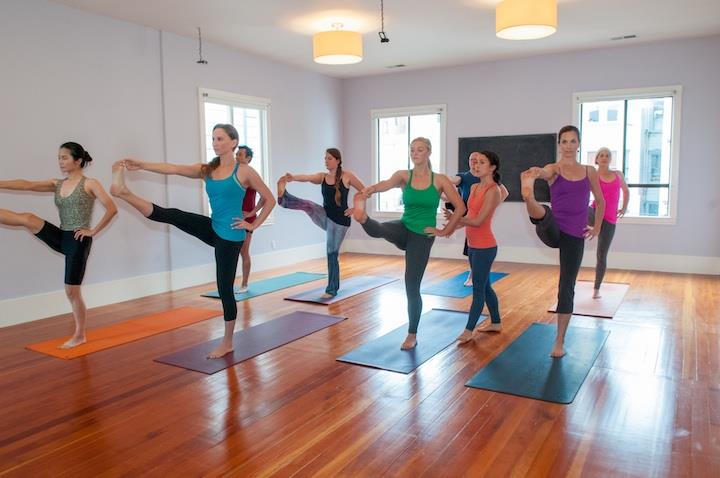

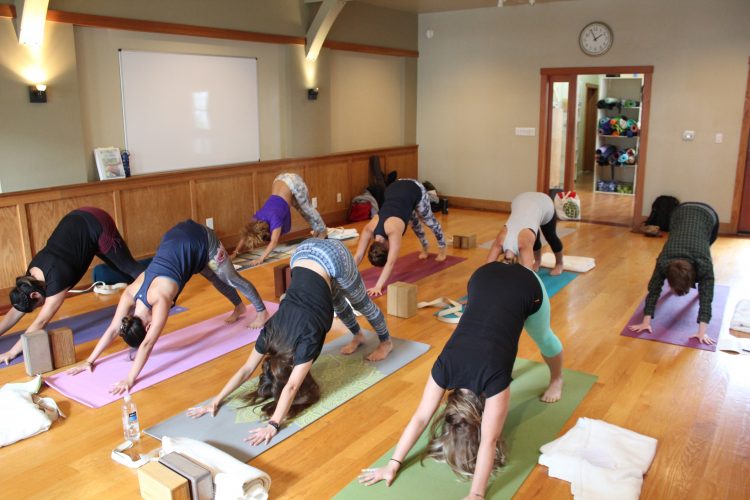
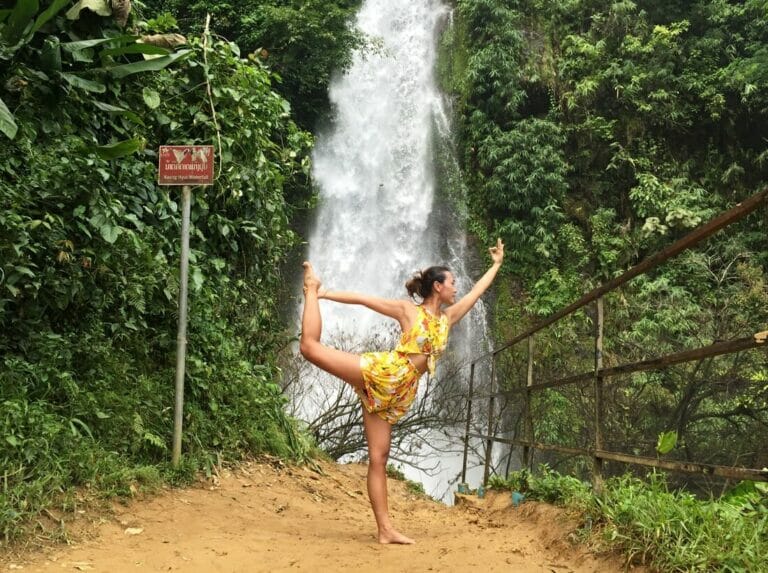
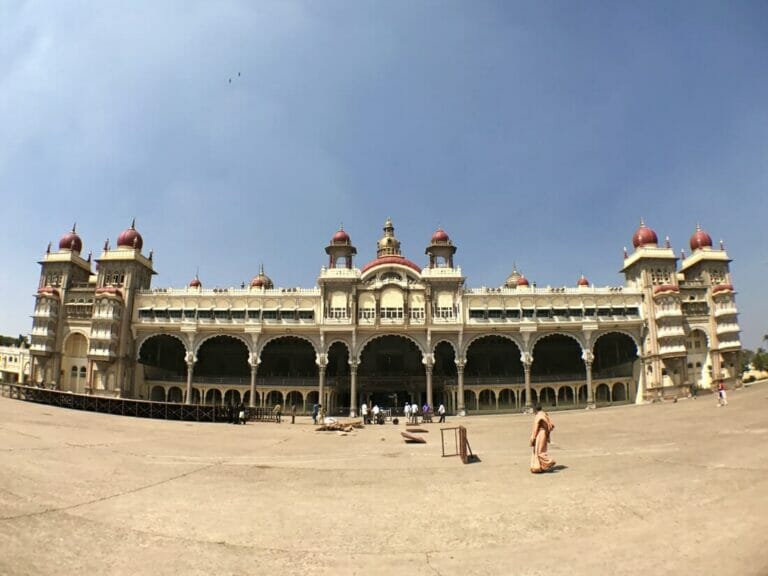

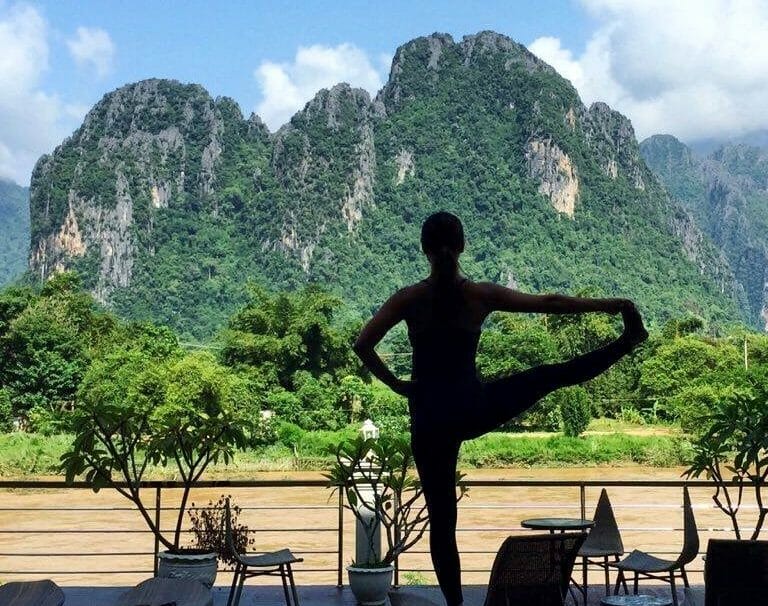
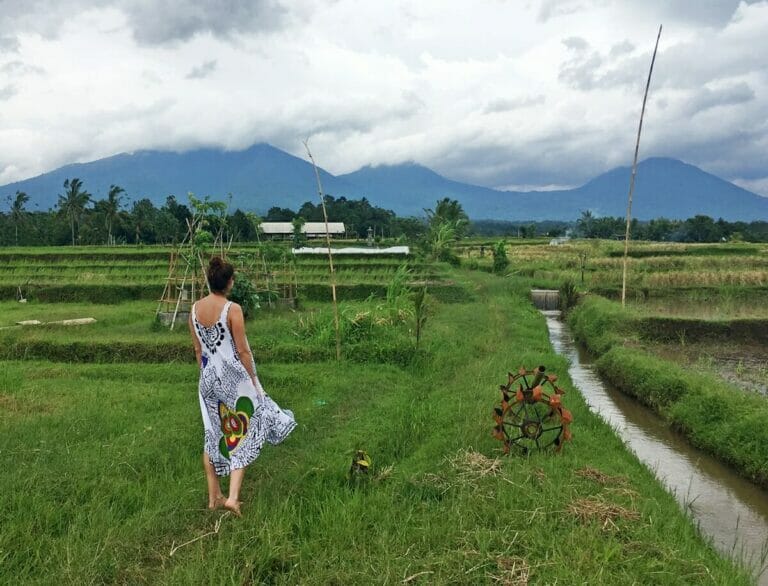

Comprehensive post! I think yoga studios reputation, teacher knowledge and location matter a lot.
Thanks for taking the time to read this!